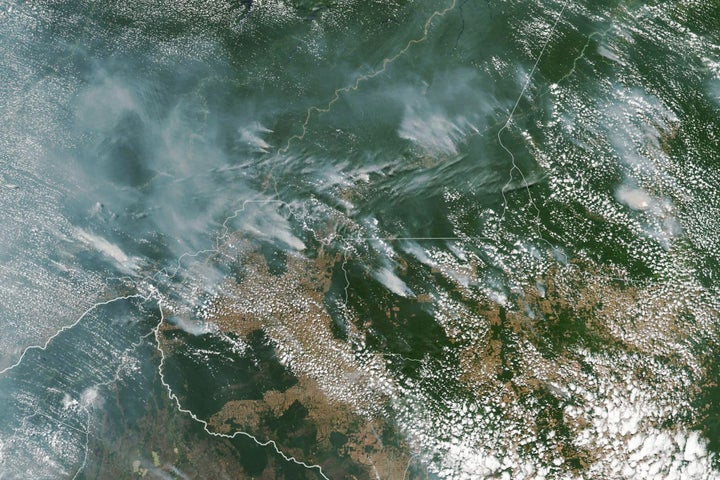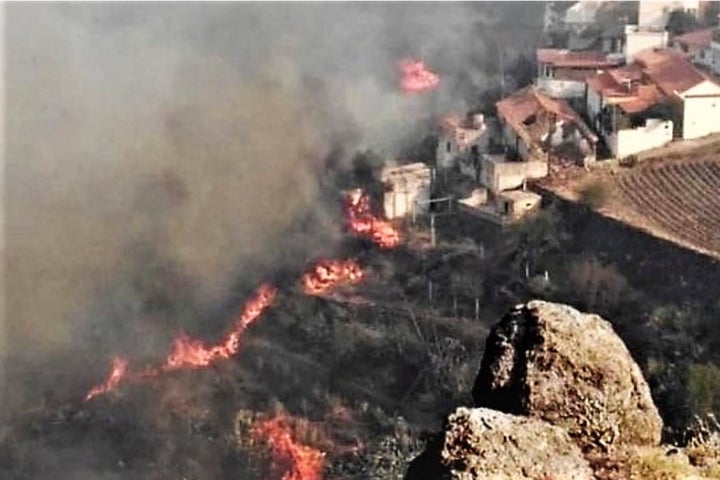Wildfires in Brazil have made headlines this week, as numerous states face some of the most destructive blazes in the country’s history.
But the fires in the Amazon rainforest are just one part of a global story, as regions worldwide are being blighted by record-breaking fires.
Across the globe, firefighters are working around the clock to control thousands of fires, with many regions reporting “unprecedented” amounts of ground being engulfed by flames.
If you think these situations have become worse in recent years then, to put it simply, it’s because they have.
Here’s what’s happening – and why.
How big are the fires in Brazil?
Huge. There have been more than 9,500 fires, of various sizes, since last Thursday alone, according to the National Institute for Space Research (Inpe).
The fires are visible in satellite images taken from space and show Roraima, a state in the north of Brazil, covered in dark smoke.

In neighbouring Amazonas, an emergency has been declared and the state capital of Manaus has been on high alert and hundreds of fires are also burning in the state of Rondônia.
Where else in the world are wildfires occurring?
The Amazon Basin – most of which is covered by forest – stretches across Brazil and seven other countries.
While there are no fires in São Paulo, the city was plunged into darkness this week when smoke from Paraguay (not Brazil as numerous outlets reported) was blown across the border.
In Bolivia, the country’s president, Evo Morales, visited the state of Santa Cruz, where an emergency has been declared after blazes blighting 460,000 hectares of land.
In Europe, the Canary Islands have been hit particularly hard with over 9,000 people being evacuated last week as firefighters tried to control flames engulfing 10,000 hectares of land on Gran Canaria.

This fire is the second to hit the popular holiday islands this month and authorities battled it with four seaplanes, 1 million litres of water and 600 firefighters, reports CNN.
Forest fires have consumed an area the size of Belgium in Siberia, according to the BBC, where the remote location has caused difficulties for emergency services.
And in the past two this month, Denmark has flown firefighters over to Greenland as “unprecedented” arctic fires continue while in Alaska, 100 fires were raging at the end of July.
Are these blazes unusual?
Many of the countries fighting the flames are used to dealing with forest fires but statistics reveal this year’s blazes are bigger than in past years. While pictures of wildfires make for alarming viewing, the statistics are equally concerning.
Take Brazil. Data released this week revealed that there have been 75,000 fires in its Amazon rainforest since January this year – which is an 84% increase on the same period of 2018.
Gran Canaria’s authorities have called the blazes on their isles “an unprecedented environmental tragedy” and while the Greenland fires are smaller than those which hit the country in 2017, they’re alarming nonetheless.
California has seen fewer fires this summer than in the same period of 2018, but a look at the bigger picture reveals six of the state’s 10 worst ever fires have happened in the last 18 months. Its 2018 fire season was the deadliest since records began.
What’s causing the increase?
Climate change and environmental issues are often to blame for the speed at which fires spread, and the fact that they’re hard to contain, but the blazes are often started by more direct human behaviour.
When areas of Greenland were engulfed in flames in July, researchers found the temperature there was 10 degrees hotter than normal. Authorities have also explained that the country is facing “huge droughts” after high temperatures caused snow to melt quicker than usual.
But the actual sparks are often down to humans with local police reporting one fjord fire caused by a stove, others originating from small pieces of glass reflecting sunlight onto dry grass and plants, and some from discarded cigarette butts.
It’s a little more complicated in Brazil where fires commonly occur there during the dry season (which runs from March to November). Many are accidental but some are started deliberately by people wanting to deforest land and use it for cattle ranches – something the country’s controversial president is all for.
Brushing off data which reveals the extent of the damage being done to the Amazon forest, Jair Bolsonaro was recently quoted as telling Reuters news agency it’s just the “season of the queimada”, which is when farmers use fire to clear land.
“I used to be called Captain Chainsaw. Now I am Nero, setting the Amazon aflame,” he said.

